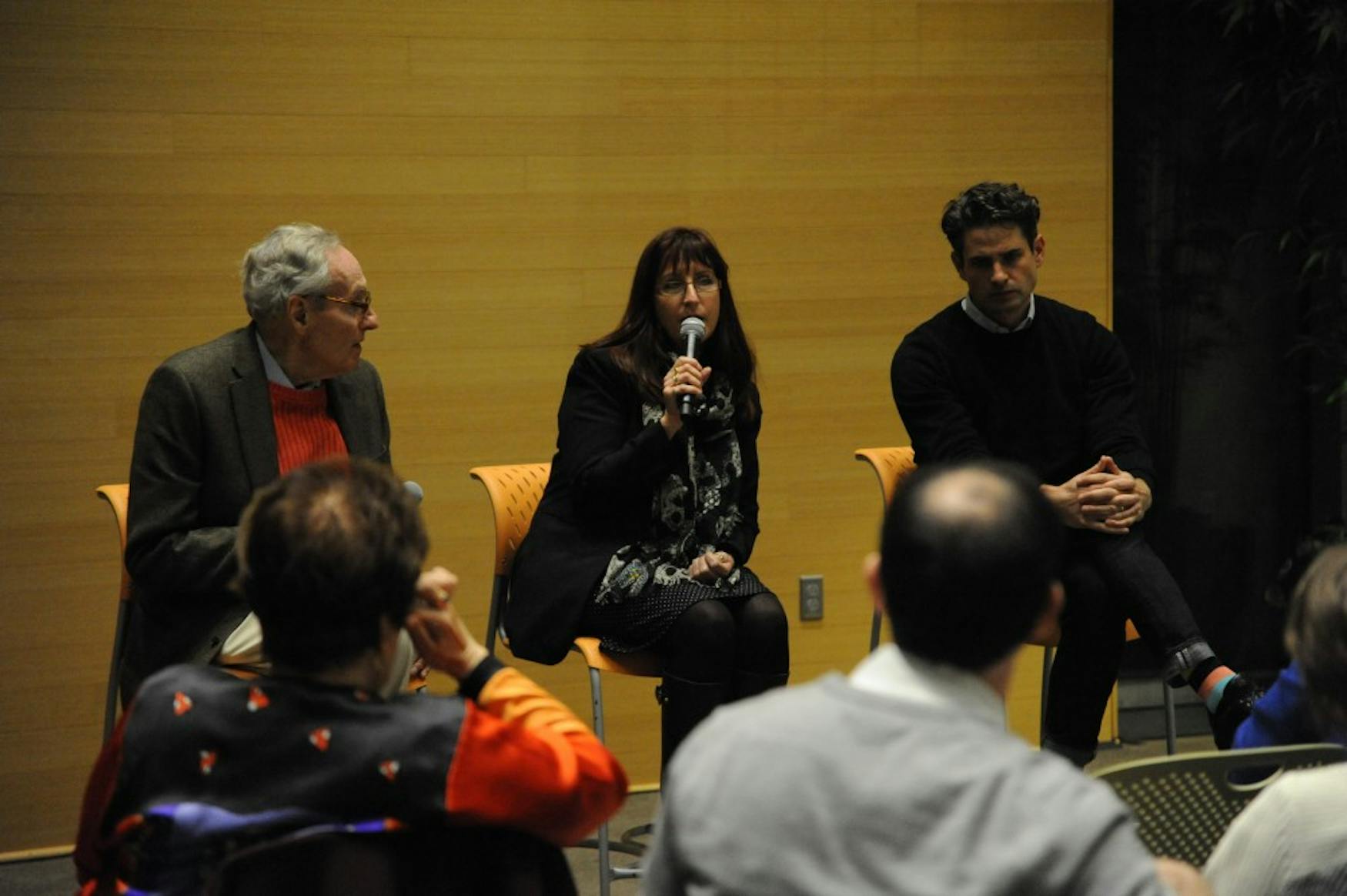Film director discusses the issue of antibiotic overuse in America
The Schuster Institute for Investigative Journalism screened Resistance, a 2014 documentary that discusses the evolution of antibiotic-resistant strains of bacteria as a result of overusing antibiotics, on Thursday.
Florence Graves, the founding director of the Schuster Institute, said in her opening remarks about Resistance that “[t]he film provides both a 30,000 foot view of the problem and provides a closer look to enable us to talk about it in detail.”
The film focused on stories of families who had been directly affected by antibiotic-resistant bacteria.
The first story the film explored was about a young boy from Kentucky who developed a very high fever and began hallucinating. He was diagnosed with pneumonia but his condition continued to worsen. As his health steadily declined and his parents grew more worried, the doctors eventually diagnosed him correctly. They determined that he had contracted Methicillin-Resistant Staphylococcus Aureus (MRSA), a bacterial infection that is a strain of staphylococcus bacteria (staph) and isresistant to antibiotic treatments. Staphylococci are a strain of bacteria that can cause a variety of infections in humans and animals by producing toxins.
Initially, in order to counteract the negative effects of the MRSA infection, the doctors put him into a medically induced coma. The young boy eventually came out of the coma, but he remained on antibiotics and struggled to walk.
The film next focused on Dr. Brad Spellberg, an infectious disease specialist at University of California, Los Angeles. Spellberg told the story of a leukemia patient who was a mother in her 20s. The patient developed a bacterial infection that he was unable to treat with antibiotics and died.
“I remember looking at the computer screen of everything the bacteria was resistant to and feeling powerless. I couldn’t believe that an infectious disease specialist had run out of medicine,” said Spellberg.
Spellberg continued to say that while antibiotics kill bacteria, antibiotic-resistant strains of bacteria evolve as result of several factors, including doctors prescribing wrong doses of antibiotics and giving antibiotics to animals.
Maryn McKenna, a Schuster Institute senior fellow, was featured throughout the film as well. “We completely squandered a miraculous medicine, and it astonishes me that we don’t ask ourselves how we squandered it,” she said about antibiotics.
The film then turned to a story about a California surfer who developed spinal lesions as a result of contracting an antibiotic-resistant staph infection.
Due to the multiple surgical procedures and sepsis, a potentially fatal whole-body inflammation caused by infection, the surfer lost control of his legs. In the film, his wife said, “It can happen to anyone, anywhere, any time—no one is safe.”
McKenna then posed in the question in the film, “How did antibiotic use become so prevalent?”
The film then discussed the development of antibiotics. It began in the 1940s with Alexander Fleming’s famous discovery of penicillin by way of moldy bread, and the discovery of tetracycline in moldy cantaloupe.
Stemming from the discoveries of antibiotics, the film discussed how Winston Churchill’s decision to use penicillin in the military during World War II allowed antibiotics to be completely integrated into the medicinal world. The film showed various clips from the World War II-era that praised the use of antibiotics, featuring phrases such as, “Thanks to penicillin, he will come home.” At this point, the film seemed to suggest that had it not been for that initial push from Churchill, the world would not have begun to overuse antibiotics.
McKenna cited an incident of antibiotic overusage when the United States Army gave antibiotics to women to prevent the spread of venereal disease in the military, which led to the evolution of a penicillin-resistant strain of gonorrhea.
“Doctors use antibiotics because they are afraid of being wrong. If you don’t address that fear at that moment, then it’s not going to work,” said Spellberg.
The film then continued to describe practices of overusing antibiotics.
Senior Officer for the Pew Campaign on Human Health and Industrial Farming Gail V. Hansen explained the origins of putting antibiotics into animal feed on farms. According to Hansen, low levels of antibiotics make animals grow a bit faster. Initially, penicillin and tetracycline were added to their food in order to produce as much meat as quickly and cheaply as possible.
According to the film, 80 percent of antibiotics sold in the U.S. are used on farms, and 80 percent of antibiotics given to animals are used non-therapeutically. “The system has to change, but farms say it would cost too much. Tell that to a mother whose child has died,” said McKenna.
The film also presented responses outside of the U.S., focusing on Denmark, where since 1992, there has been a ban on using growth promoters or antibiotics in pigs. In 1998, the ban was extended to all animals.
According to the film, Danish farmers use 50 percent less antibiotics since the ban and produce 50 percent more meat. Antibiotic resistance in bacteria has also decreased since the ban.
According to the film, 148,000 people die every year due to uncontrollable infections. The next question posed by the film was why new antibiotics have not been developed.
“A drug company spends a billion dollars to develop an antibiotic, and physicians can only use it for a few years until it is no longer usable because resistant strains have evolved,” McKenna explained. “We have to develop new medicines, or we will not have any effective ones at all.”
The event was co-sponsored by the Biology department, Brandeis Students for Environment Action and the Health: Science, Society and Policy program.



Please note All comments are eligible for publication in The Justice.